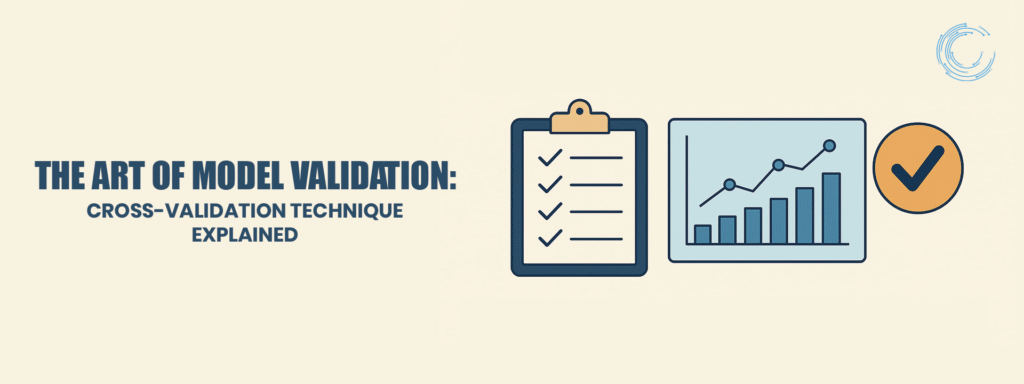
Imagine launching a machine learning model that dazzles in testing but flops when it hits the real world. Frustrating, right? That’s where model validation saves the day, acting like a reality check to ensure your model performs reliably on new data. At the heart of this process is cross-validation, a must-have skill for anyone building trustworthy AI in 2025. Let’s break down how cross-validation works, explore its top techniques, and see why it’s a game-changer for businesses.
Why Validation Is a Big Deal
A model that nails predictions on your training data can still bomb on unseen data—a classic case of overfitting. Cross-validation tests how well your model generalizes, giving you confidence it will deliver in real-world scenarios, like predicting customer churn or spotting fraud. Without it, you are rolling the dice on your model’s success.
Cross-Validation: The Basics
Cross-validation splits your data into smaller chunks (called folds) and takes turns training and testing your model across them. This ensures every data point gets a shot at being both a learner and a tester, giving you a solid estimate of how your model will perform in the wild.
Top Cross-Validation Techniques
Here are the most popular techniques and when to use them:
- K-Fold Cross-Validation: Splits data into K folds (usually 5 or 10). Train on K-1 folds, test on the last, and repeat K times. Perfect for balanced datasets.
Example: A retailer uses 5-Fold Cross-Validation to ensure their sales prediction model works across diverse customer groups. - Stratified K-Fold: Like K-Fold, but keeps class proportions consistent in each fold. Ideal for imbalanced datasets, like fraud detection.
Example: A bank uses Stratified K-Fold to ensure their fraud detection model trains on both rare fraud cases and common transactions. - Leave-One-Out (LOOCV): Tests each data point individually while training on the rest. Super thorough but slow, so it’s best for small datasets.
Example: A medical researcher uses LOOCV to validate a model predicting rare disease outcomes with limited patient data. - Time Series Cross-Validation: For time-based data, it respects chronological order to avoid “peeking” into the future.
Example: A logistics firm forecasts delivery times using time series cross-validation to mimic real-world conditions.
Choosing the Right Technique
Picking the best method depends on your data and goals:
| Scenario | Best Technique |
| Balanced or large datasets | K-Fold Cross-Validation |
| Imbalanced datasets | Stratified K-Fold |
| Small datasets | Leave-One-Out (LOOCV) |
| Time-based data | Time Series Cross-Validation |
The trick is balancing accuracy with speed—K-Fold is often the sweet spot for most projects.
Real-World Impact
Consider a fitness app predicting user engagement. In testing, their model hits 95% accuracy, but without cross-validation, it flops in production, misjudging user behaviour. After using 5-Fold Cross-Validation, they discover the true accuracy is 80%, prompting tweaks that make the model a winner. This saves time, money, and customer trust.
Why This Matters in 2025
With data growing more complex, cross-validation is your ticket to building models that don’t just look good on paper—they deliver in the real world. Whether you are personalizing ads or optimizing supply chains, these techniques ensure your AI is reliable and ready for action.
Want to dive deeper into building robust ML solutions? Check out more insights at TeamITServe.
